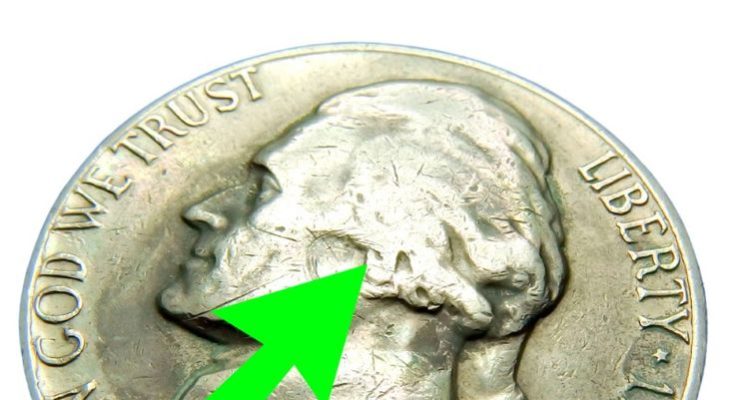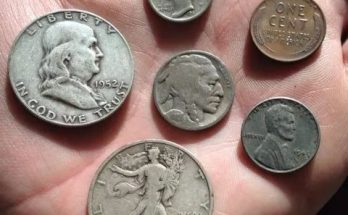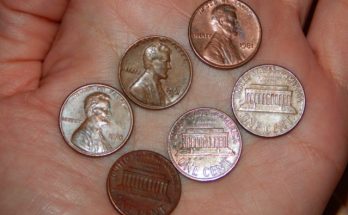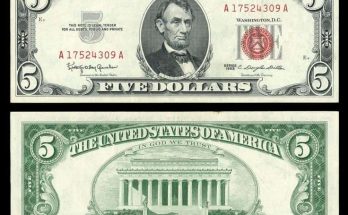The 1964 Nickel may initially seem like an ordinary, lower denomination coin. But today, it holds a lot of numismatic significance due to its minting year – 1964. It was the same year the official mints achieved the nickel’s highest mintage and suffered from a date freeze later!
But do such unique feats increase the coin’s worth? Well, you’ll know it all as I unfold the history of a 1964 nickel and its unique grades, mints, and errors that make it more collectible.
Key Takeaways
- The 1964 nickels were issued to cover the shortage in circulation of silver nickels in 1964.
- Due to a high mintage (2 billion coins), the 1964 nickel coins are pretty common unless from limited-edition proof or SMS sets.
- The 1964 nickels have unique annealing, 1c planchet, broadstruck, or off-center errors, making them rare and valuable today.
- Want to know if your 1964 Nickel is rare or collectible? Well, then, don’t miss out on the mint marks, reliefs, and grading factors mentioned below!
A Quick Overview of the 1964 Nickel’s History

💌 Daily One Friendly Email from Me on Old & Antique Wonders
One email, 5 minutes, countless discoveries. No SPAM, just our shared love for old treasures.
Designed by a top US artist, Felix Schlag, the 1964 Jefferson Nickel was circulated from 1938. But, in 1964, it underwent some historical changes as follows:
- 1927: The in-circulation Buffalo Nickels had a bad reputation for their raised reliefs, dates, and sustainability. So, Congress hosted a competition for a new nickel, and a Thomas Jefferson memento design by Felix Schlag won.
- 1938: The first Jefferson Nickel was circulated with a left-facing cameo of Sir Jefferson, the 3rd U.S. President on the Obverse, and his Virginia home on the reverse. Also, this coin used an alloyed composition of 75% copper & 25% nickel.
- 1942: Then, during WW2, the Philadelphia Mint changed the nickel composition to 56% copper, 35% silver & 9% manganese to save the nickel for extra ammunition.
- 1964: Congress asked the mints to work overtime to cover the shortage on the circulation of the silver nickels. Both mints produced about 2,825,919,922 coins, making it the nickel’s highest mintage in history.
- 1965: There was a date freeze, and hence, some of the Jefferson nickels, minted in 1965, had the minting year as ‘1964.’
- 2004: Minor changes were made to the reverse to honor the Lewis & Clark expedition.
- 2006: The word ‘Liberty’ was changed to an original font from Sir Jefferson’s handwriting and is circulated to date!
| 1964 Nickel | Key Features |
| Material (Composition) | 75% Copper & 25% Nickel |
| Minting Location | Philadelphia, Denver |
| Minting Year | 1964 (Some 1964 nickels were minted in 1965 too.) |
| Weight | 5 grams |
| Diameter | 21.2 mm |
| Thickness | 1.95 mm |
| Designer – Engraver | Felix Schlag |
| Face Value | $0.05 |
| Mint Marks | No mint mark (Philadelphia), d-mark (Denver mint) |
| Total Mintage (All Facilities) | 2,825,919,922 (2 Billion) |
Design Features & Details of the 1964 Nickel
Now, let’s understand all the design details that Felix Schlag put into these widely-circulated coin’s obverse & reverse:
1. Obverse (Heads) Design:

You can spot a 1964 copper nickel coin’s front or obverse design by the following features:
- A high-relief, left-facing portrait of Thomas Jefferson, the 3rd U.S. President
- The word ‘LIBERTY’ is carved along the right rim, behind Jefferson’s head
- The motto ‘IN GOD WE TRUST’ runs along the left edge, in front of the President’s face
- The mint year ‘1964’ is inscribed on the left, under the ‘LIBERTY’ word
- A 5-spoked star between the ‘LIBERTY’ and ‘1964’ reliefs
2. Reverse (Tails) Design:

The reverse or back design of the 1964 nickel has the following features:
- A detailed depiction of the Monticello (Thomas Jefferson’s neoclassical house in Virginia)
- The Latin motto ‘E PLURIBUS UNUM’ is carved along the upper edge of the reverse
- The word ‘Monticello’ is inscribed with distant kerning under the house motif
- ‘UNITED STATES OF AMERICA’ relief carved along the bottom rim on the reverse
- The face value, ‘Five Cents,’ is written in small arched letters under ‘Monticello’
- The mint mark, if any, is located on the right of the Monticello motif on the reverse
3. Coin Composition & Measurements:
Despite a silver-free alloy composition of 75% Copper & 25% Nickel, the 1964 Nickel has a superior melt value of up to $0.0562344. And although the coin weighs 5 grams in mint state, the copper weighs only 3.75 g, while the rest belongs to nickel and impurities.
Besides, the coin is 1.95 mm thick, with a diameter of 21.2 mm and a plain but slightly raised edge.
4. Unique Identifying Mint Marks

- 1964 Nickel (no-mint mark): In 1964, the Philadelphia Mint produced 1,024,672,000 coins alone, all without any mint mark or identifier. So naturally, these have a lower value of 15 – 20 cents unless in a mint or uncirculated state.
- The 1964-D Nickel: About 1,787,297,160 Jefferson nickels were minted in Denver alone. And all of them have a unique, capital-case ‘D mark,’ which you can spot on the right side of the Monticello house motif on the reverse.

4 Factors That Affect the Value of a 1964 Nickel
Now, let’s go through the four most important factors that tell you if your 1964 Jefferson nickel is worth collecting or not:
1. Coin Condition & Grading

Do you know that an old $0.05 nickel can cost up to $500 or more when graded by professional agencies like NGC, PCGS & ANACS?
Well, that’s only when these coins are in visibly good condition, with less oxidation and sharp, prominent details on all the motifs. And if your coin is an ungraded one with visible stains, blunt edges, and discoloration, it might be worth the same as its face value.
So, just get your coin graded by a professional and use the following guide to value it:
| Coin’s Condition / Grade | 1964 Nickel (Philadelphia) | 1964-D Nickel (Denver) |
| Good – Very Fine (VF20+) | Less than 10-cents (error coins can cost up to $1) | 10 cents – $6 |
| Extremely Fine (XF40) – Almost Uncirculated (AU58+) | Less than $1 (error coins (like 1-c planchet) can cost up to $180) | 10 cents – $17 |
| Mint State (MS60 – MS65) | $2 – 20 | $20 – 110 |
| MS66 & Above | $10 – 130 | $5 – 510 |
| Highest Auction Record | $9,700 for a collection of two coins | $1,750 |
2. The 1964 Nickel Proof Coin
The 1964 nickel proofs, limited to 3,950,762 coins worldwide, are a rare collectible, valuing up to $3,000 for a PR 70 grade. While these have a similar material composition (75% Copper & 25% Nickel) as the original one, they use a different, mirror-like polish, along with the following features:
- A frosted or high-contrast background against the President’s profile
- Sharp and highly struck details
- Artificially enhanced or polished surfaces
- No mint mark as all of them were minted in Philadelphia
- Smooth and plain edge
3. The 1964 SMS Nickel (Special Mint Set) Coins

Art from the regular mint and proof coins, the Philadelphia mint produced about 20 Special Mint coins for leaders and other prestigious celebrities. And since these coins have a detailed strike with a sharp edge and a satin finish, they cost more, often up to $30,000.
So, here’s a features list to help you identify a 1964 SMS nickel:
- Satin and silky-smooth texture
- A bright, champagne-gold surface color
- A superior grade of 65 & more
- Sharp and detailed features, especially near the hair and cheekbones
- Carved steps on the Monticello house’s plinth on the reverse
4. The 1964 Nickel Errors List
Despite the high-strike planchets and dedicated mints, the 1964 Nickel was struck with some minting flaws, especially due to its dies & planchets. Some of them are:
- Annealing Error: This was a common error in the earliest Denver mint coins caused by the leaked nickel plating on top. Such a coin has a whitish-silvery surface with a reddish copper blot in the center. Overall, such coins value up to $40 in mint state.
- Broadstruck Error: This error happens when the coin planchet breaks inside the mint die. This leads to uneven coin edges, often with a v-shaped notch at the left side, next to the Monticello house. But, such a rare error fetches up to $60 in the antiques market.
- 1c Planchet Error: Get a coin weighing scale and check your coin’s weight. If it weighs less than 5 grams, it might have a 1c Planchet error, i.e., a 1964 Nickel design struck on a one-cent planchet. Such coins are thin and hollow but have a different ringing sound and strike, making them valuable.
- Double Punched Mint Mark Error: You can identify this error by checking for a double-D or bold D mint mark on any Denver Mint coin. Usually, such coins value about $15 – 50, depending on their condition.
- Off-Center Strike: If the coin’s design isn’t centered correctly, or if some part of the design is missing, it might be an off-center error. And the more the error, the more the coin costs!
Is Your 1964 Jefferson Nickel Real & Collectible?
Well, you might be proud of that shiny Jefferson nickel in your coin book! But it’s high time to check if it’s a real one or just a modified counterfeit coin made to look real. And for this, check if the coin has any of the FAKE features below:
- Wrong dimensions and a lower weight of up to 3 grams
- Might have reeded or grooved edges
- Different font, spacing, and kerning
- Might have yellowish brass or white zinc surfaces
- Doesn’t have any aged patina or toning



